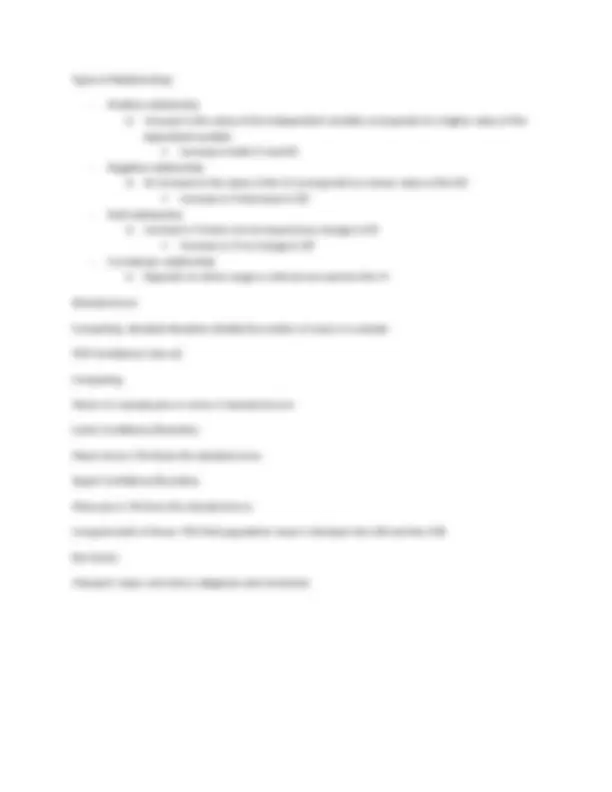



Study with the several resources on Docsity

Earn points by helping other students or get them with a premium plan


Prepare for your exams
Study with the several resources on Docsity

Earn points to download
Earn points by helping other students or get them with a premium plan
Community
Ask the community for help and clear up your study doubts
Discover the best universities in your country according to Docsity users
Free resources
Download our free guides on studying techniques, anxiety management strategies, and thesis advice from Docsity tutors
A comprehensive study guide on various statistical concepts including mean, median, mode, range, standard deviation, z-scores, bar charts, cross tabulation, means comparison, and types of relationships. It covers the computational methods and interpretations of each statistical measure.
Typology: Study notes
1 / 3

This page cannot be seen from the preview
Don't miss anything!


Poli Analysis Study Guide Mean- computing: Add all numbers in data set then divide by total numbers in data set Interpreting- if one were to choose a number at random from data set, one would expect it to be the mean. It is the “average” of all numbers Median- computing: It is the middle number of the data set, if even amount of numbers in data set, add two middle and divide by 2 Interpreting: means that ½ the numbers in the data set are higher than the median, and ½ the numbers are lower Skewness: Positive skew: when the mean is bigger than median Negative skew: when the median exceeds the mean Mode- computing/interpreting: The mode is the most reoccurring number in the data set. It means that there are no other numbers that occur more than the mode. If no mode, state there is no mode. Range: Computing- take the highest number and subtract it from the lowest number in the data set Interpreting- the range is the amount of whole numbers that exist between the highest and lowest number in the data set. Allows us to see the relative size of the data set. Large range=large data set Standard Deviation- used to find the extent of which the cases in a distribution fall on or close to the mean of the distribution Computing: take each number in data set and subtract from the mean. Square the sum. Repeat for each number. Take the sum of all numbers subtracted from mean and square root. Then divide by total number of cases in the population Interpreting: